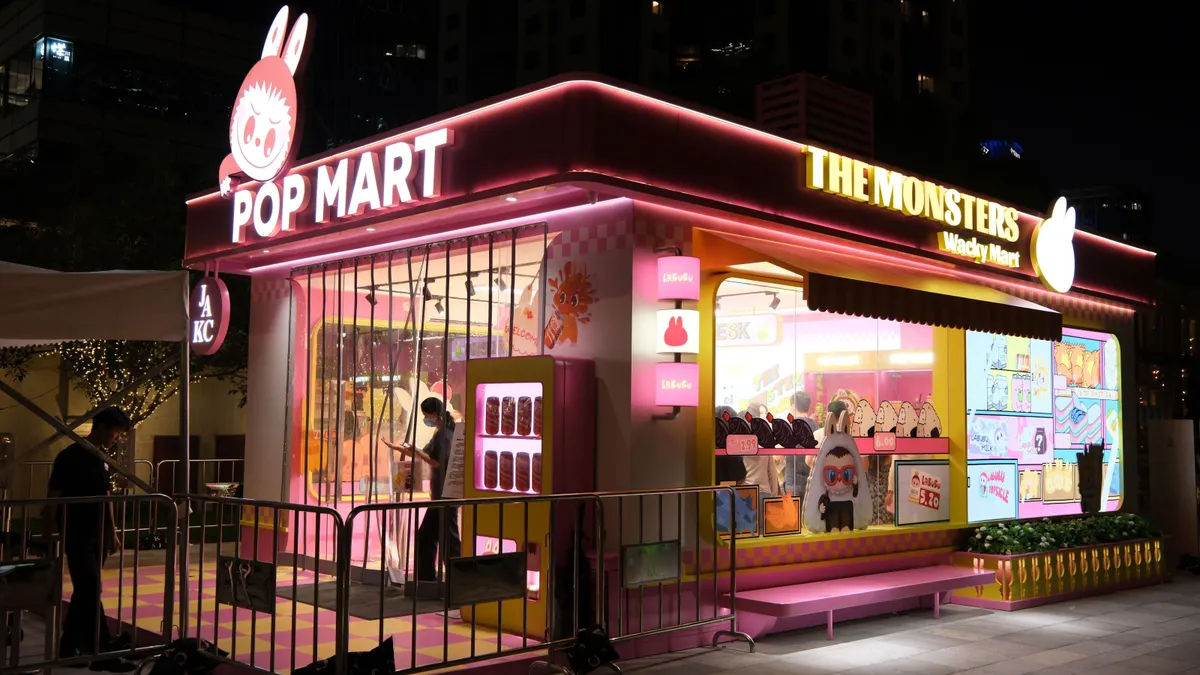When it comes to peak season, this year feels different for many retailers … because it is. New research from Deposco reveals that nearly half of retailers expect this peak season to be harder than 2024. Their trepidation is likely due to several converging factors, from persistent supply chain disruptions and rising transportation costs to tariffs and unpredictable consumer demands.
To prepare for a successful peak season, the leaders we surveyed are focusing on five areas so they can better navigate disruption.
Where Peak Season Gaps Exist This Year
Despite confidence about peak season performance this year, the survey data highlights critical gaps retail leaders plan to address in order to empower their teams to respond to fast-moving market changes.
1. Tech and data visibility
Three in 10 retail leaders (30%) plan to prioritize visibility this year to break down silos and see the entire supply chain in real time.
By connecting data across regions, suppliers, and channels in real time, retailers will have a more accurate view of inventory, supplier status, order flows, and more. This is especially crucial in 2025, when market volatility and fast shifts in demand are the norm. The leaders who can pivot supply chains from survival mode to opportunity mode will be ready to outpace competitors and capitalize on demand.
2. Multi-region supplier risk mitigation
The risks suppliers pose to retailers — geopolitical instability, transportation bottlenecks, tariffs, weather conditions, regulatory changes — often vary based on supplier location. To make sure they can adapt quickly to disruption, savvy retailers are relying on more than one supplier — and on suppliers from more than one region.
For 30% of surveyed decision-makers, this is a priority to address for peak season 2025. By diversifying their supplier base, they can build resilience to potential risk factors like outages, cost spikes, and other disruptions.
3. Demand forecasting with external economic factors
This year, demand forecasting has been especially challenging. How can retailers make reliable predictions when things are so up in the air? While traditional demand forecasting helps leaders plan inventory and resources based on historical sales and current trends, forecasting can be even more valuable when time-saving technologies are employed to take external factors into consideration in real time.
As leaders attempt to anticipate swings in demand and price sensitivity, they also need to consider the impact of external pressures. For 28% of surveyed decision-makers, improving demand forecasting with external economic factors is top of mind this year. To help these retailers anticipate and act, Deposco’s Tariff Tracker shares real-time insights into global changes.
4. Cross-border logistics
Implementing smarter cross-border logistics practices, such as real-time shipment visibility and flexible carrier networks, can help retailers reduce delays, navigate bottlenecks, and control costs more effectively.
This is where 26% of those surveyed plan to focus their efforts in 2025 to navigate complex, high-cost fulfillment challenges. As international demand and shipping complexity continue to rise, smarter cross-border logistics will make it possible to meet expectations despite uncertain global conditions.
5. Inventory agility
Having an “agile inventory” means being able to quickly move products across channels so they’re always available and ready wherever and whenever demand is highest. This helps retailers avoid missed sales, and it prevents costly overstocks.
Nearly one in four decision-makers (24%) plan to improve in this area for the 2025 peak season so they can move products across channels effectively.
How to Turn Uncertainty into Adaptability
To shift peak experiences from survival mode to competitive advantage, retailers are being proactive and investing in commerce intelligence tools that help turn market uncertainty into operational adaptability.
Advanced fulfillment solutions from Deposco address the priorities and vulnerabilities that retail leaders are focused on this year, helping them become more responsive, proactive, and adaptable. Here’s how.
Deposco’s unified fulfillment platform helps retailers break down information silos and bring together actionable intelligence from disparate systems, such as inventory, orders, suppliers, and logistics partner platforms. This provides instant, real-time visibility into the supply chain for faster decision-making and response. By creating a virtual single source of truth, leaders can get rid of the blind spots and bottlenecks that hold their teams back.
Through real-time dashboards and analytics that track supplier performance, cost fluctuations by region, and potential risks like transportation delays and regulatory changes, Deposco helps retail leaders in their quest to mitigate supplier risk. By ensuring diversification and the ability to pivot between suppliers and locations, retailers are less vulnerable to outages or spikes in costs.
To improve demand forecasting and help teams add external economic factors into the mix, Deposco helps teams integrate internal sales trends and external data about tariffs and inflation to build better forecasts. By spotting demand patterns and adjusting inventory strategies accordingly, retailers gain resilience to fulfillment problems.
Cross-border logistics can be optimized through capabilities like advanced shipment tracking, automated customs documentation, and integration with multiple carrier networks. Deposco helps streamline international fulfillment and reduces the possibility of costly delays when global conditions shift.
Retailers are using AI-powered tools to automatically understand demand in the context of real-time stock availability, usage, and sales capture. Platforms like Deposco also alleviate the heavy data lift required to lower transportation and shipping costs, improve delivery reliability, and accelerate decision-making like never before possible.
Finally, when it comes to inventory agility, Deposco enables real-time monitoring and automated inventory allocation. This helps products move seamlessly to and through channels at the right time so teams can respond right away to demand surges without worrying about overstock risks.
From Reactive to Resilient: Building Your Long-Term Advantage
The right fulfillment solutions bridge the critical gap between readiness and true resilience when it comes to peak season, empowering retail leaders and their teams to move from crisis management to competitive advantage.
With collaborative planning tools and automation capabilities at their fingertips, decision-makers can accelerate response, capturing higher sales and greater control over labor spend. The result: a peak season where resilience drives solid advantage.
Learn more about how retail leaders are navigating this year’s peak season.






